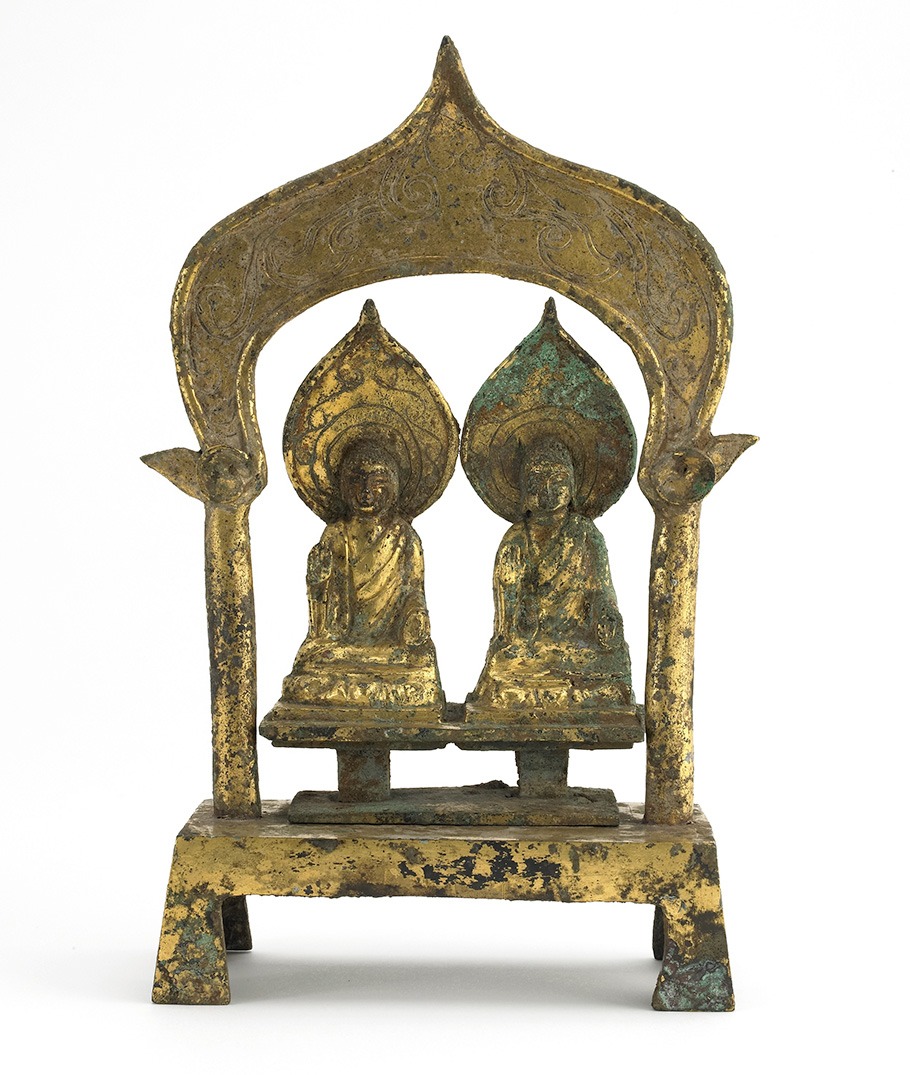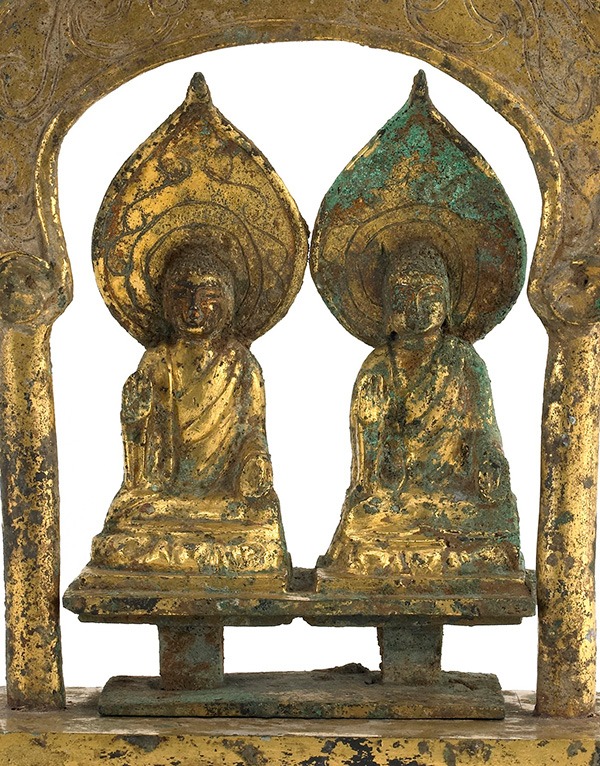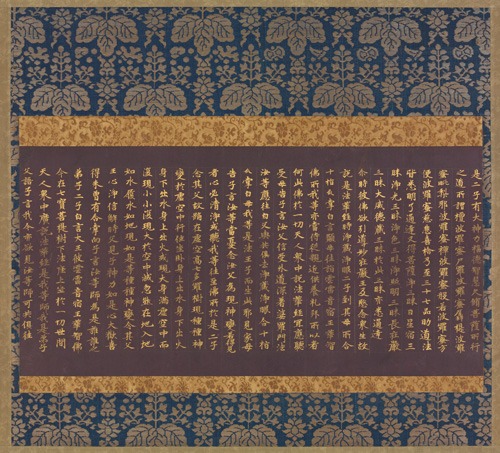 ? ?
? ?
Despite its quiet composition, this sculpture depicts a dramatic event in one of Buddhism’s most important scriptures, the Lotus Sutra. In this scene, the massive stupa, or reliquary mound, of a past buddha miraculously rises from the ground at the very moment that the Historical Buddha begins to teach. Invited inside the floating stupa, the Historical Buddha sits beside the past buddha.
This pivotal moment, represented here by almost identical buddhas seated beneath a stupa-shaped halo, validated the revolutionary idea that many buddhas can exist in the world simultaneously.
Detail, Two buddhas seated side by side (F1945.30a–b)
Rear view, the Historical Buddha (S1997.28)

For several centuries after the death of the Buddha, his teachings were preserved orally, memorized and chanted by monks. Around the first century, as monks began committing Buddhist teachings to writing, a new tradition of Buddhism emerged that strongly emphasized the written word.
The Lotus Sutra dates to this period. In it, the Buddha constantly exhorts his disciples to “copy, preserve, recite, and revere this sutra and expound it for the sake of others.” Not only did this mandate promote the sutra’s teachings, but it also inspired the creation of thousands of Lotus Sutra artworks and illuminated manuscripts—some quite opulent. For example, this scroll section, on view in Freer gallery 7, is written in gold.